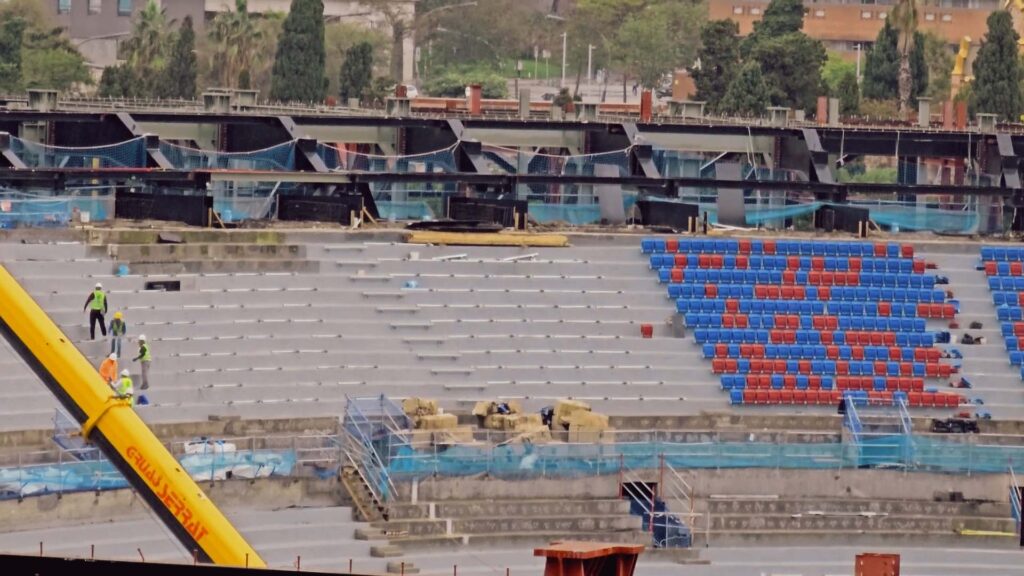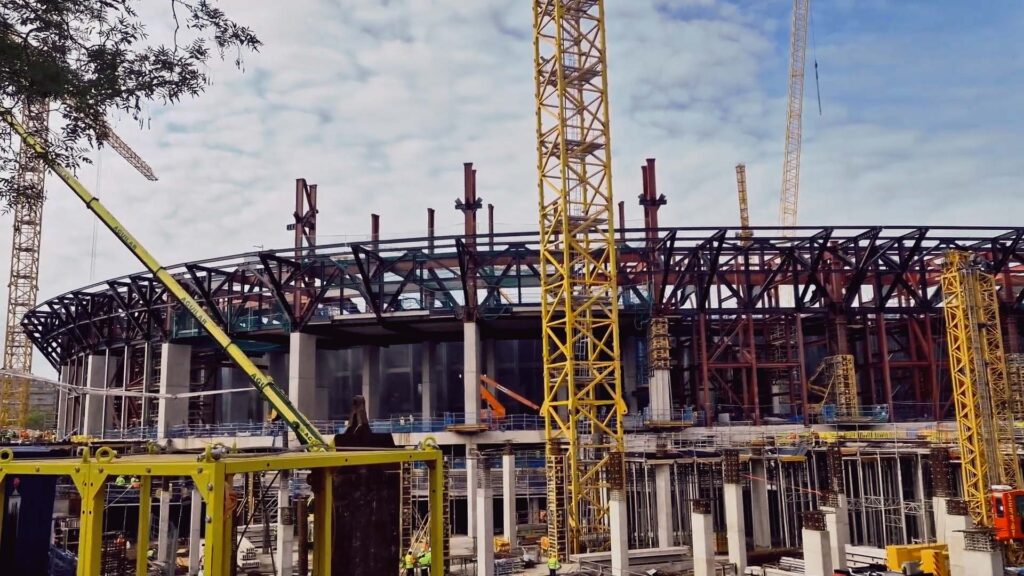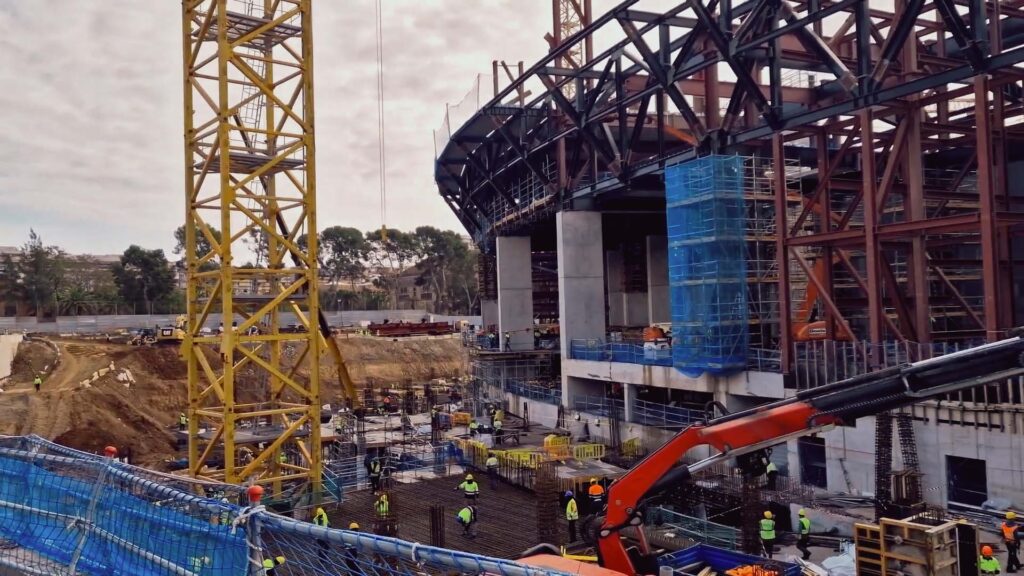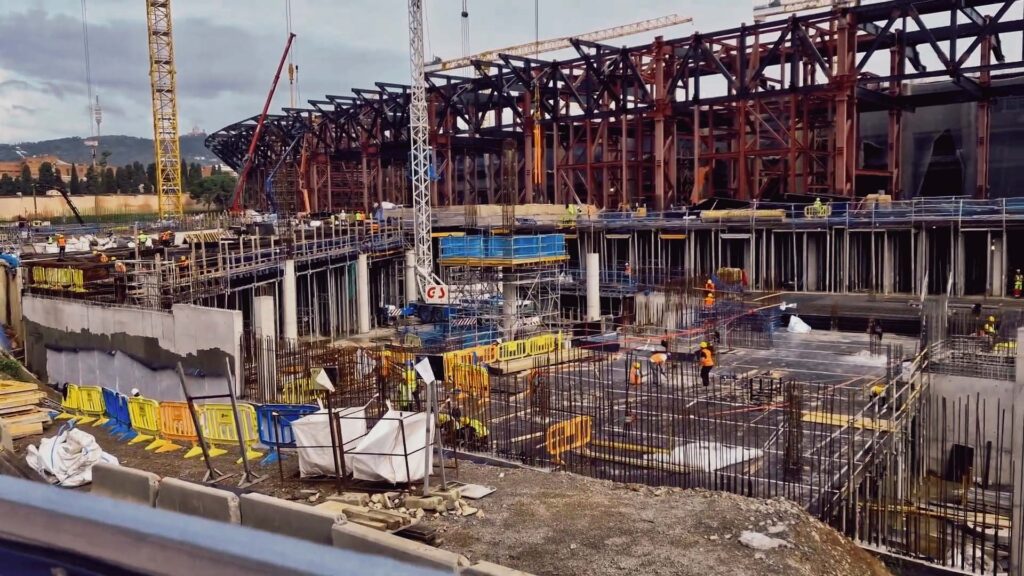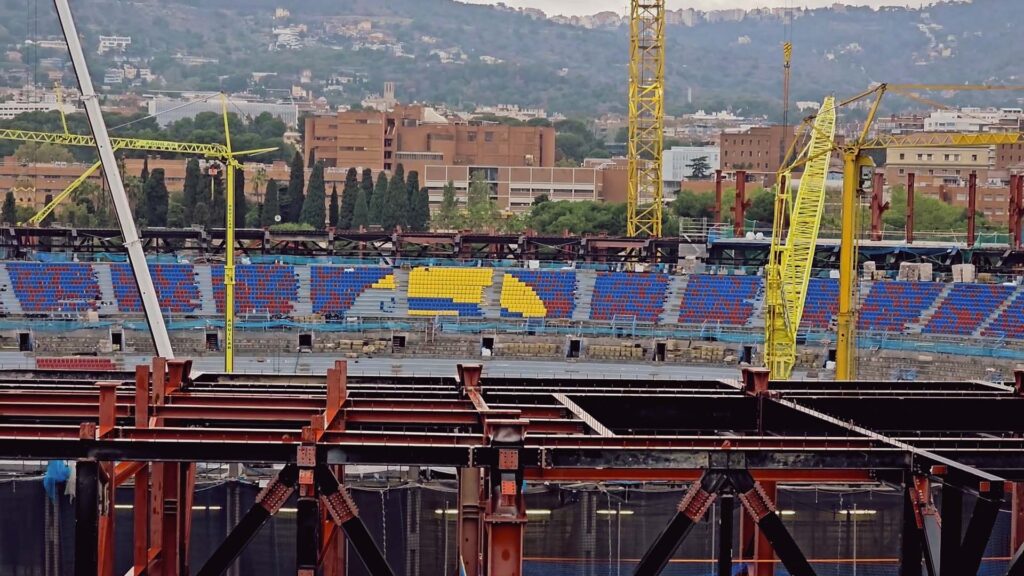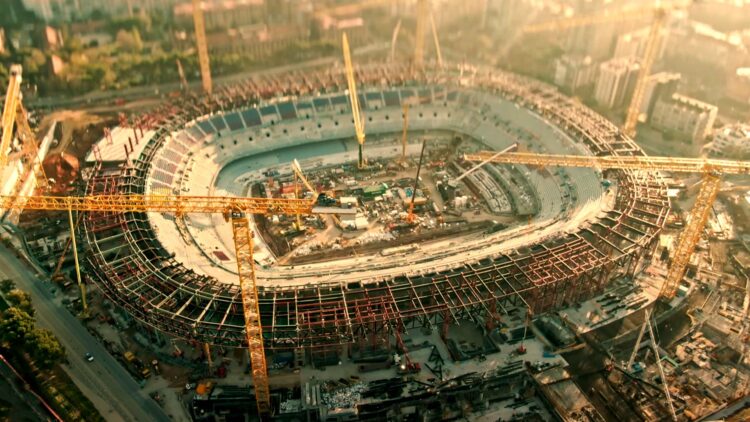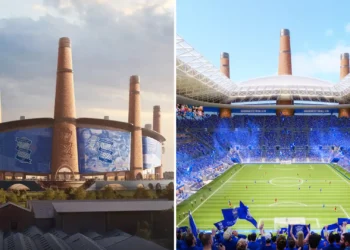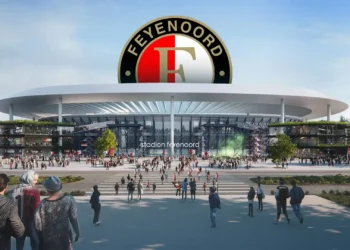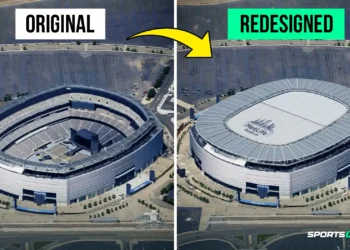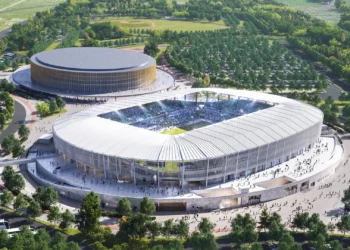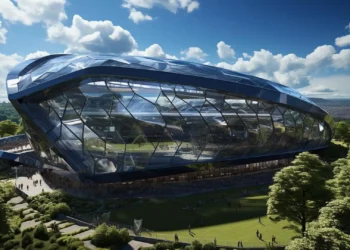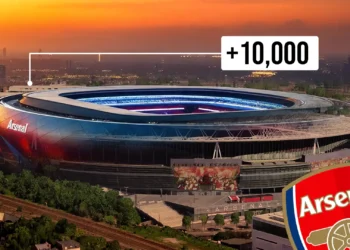The construction phase at Spotify Camp Nou stadium has moved into an intensive period, with primary focus on completing the existing stands by installing new seats and fully renovating the interiors to align with the design vision. Work also continues on installing support pillars in the third tier above the VIP areas, a crucial component for ensuring both stability and timely progress on the stadium.
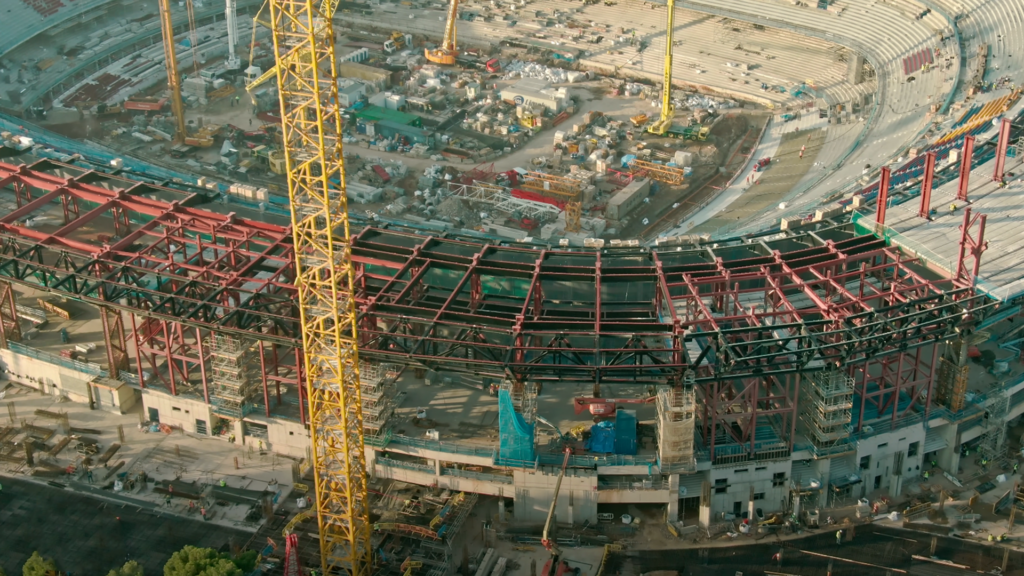
This rapid pace extends to the surrounding areas of the stadium, with significant progress visible in the parking facilities, sub-level spaces below ground level, and various sectors within the complex. Step by step, the project is taking shape.
In this animated preview, we present a glimpse of the stadium’s anticipated look upon partial opening, showing the stands filled with new seating and the completion of structural elements like concrete paneling, which will help make Camp Nou one of Europe’s top modern arenas.
As for the partial opening of Spotify Camp Nou, the club hasn’t confirmed any official date yet, though they are making steady progress. Any further delays, however, could severely impact the club’s financial stability, which has already been on shaky ground in recent years. The temporary move to the Olympic Stadium has led to estimated revenue losses exceeding $108 million per year, according to club reports. The reduced seating capacity and logistical complexities of the temporary venue have disrupted key revenue streams from ticket sales, hospitality, and other stadium-related income.

A significant concern for Barcelona is the escalating cost of renovation. Real Madrid initially estimated around €500 million for the Bernabéu redevelopment, only to see costs skyrocket. Madrid now expects the stadium to cover its costs by 2053, with an annual financial commitment of €66 million.
Delays in the Camp Nou project will directly impact Barcelona’s revenue and budget. With President Joan Laporta attempting to sell off parts of the club’s assets, including shares in its media production unit, financial flexibility is dwindling as he seeks to satisfy banks, creditors, and La Liga’s financial regulations.
Optimistically, the new facility is projected to generate about €300 million annually. However, given Barcelona’s past financial missteps, this ambitious goal will likely test the resilience of both management and fans alike.
